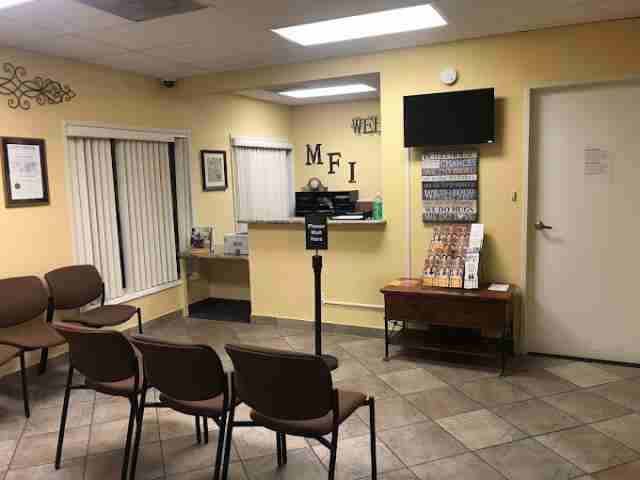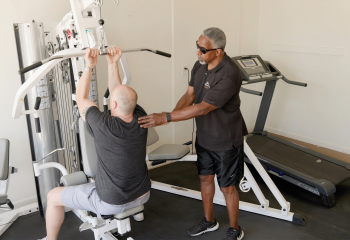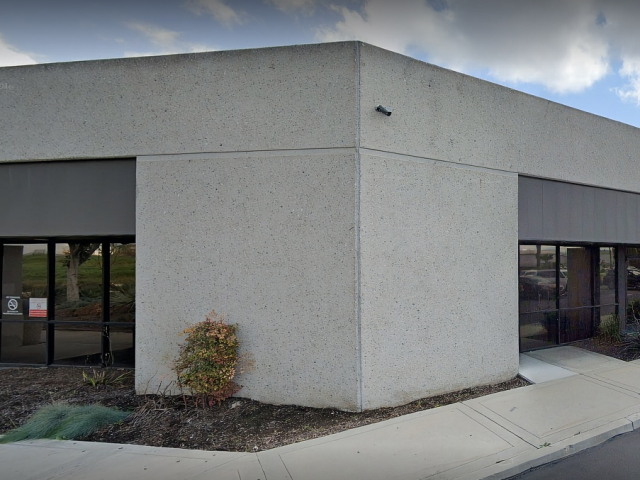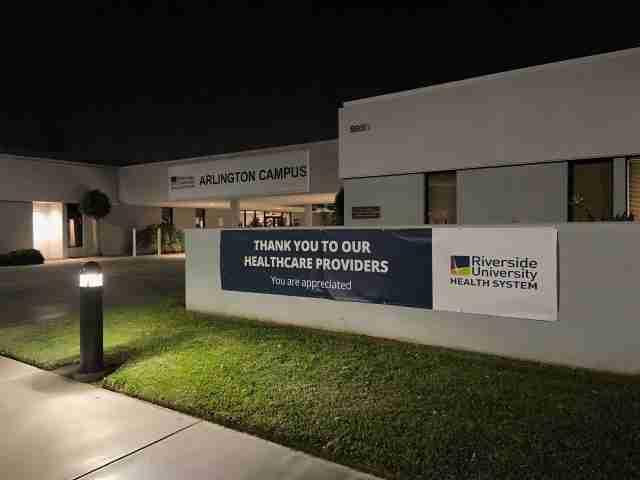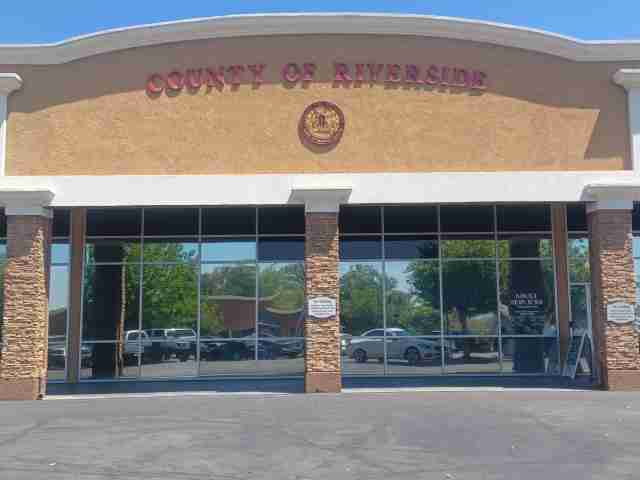More About Rehab Centers that Accept Insurance
Overcoming drug and alcohol addiction isn’t easy, especially without professional help. Finding the right addiction treatment program can provide peace of mind and help you get the help you need to achieve and sustain recovery.(1) If you're considering a treatment program, your insurance may cover some or all of the cost.
Does Insurance Cover Rehab for Addiction?
Most health insurance plans do provide some level of coverage for addiction treatment.(2) Does medical insurance cover rehab completely? The cost of treatment will vary for each individual because of different factors, such as your plan, the rehab you attend, its amenities, the location of the rehab, and the length of your stay.
Those with health insurance should know that the Affordable Care Act mandates that all Marketplace plans cover mental health and substance misuse services as essential health benefits (EHBs).(3) The federal government also requires that all Marketplace plans offer the same level of coverage for substance use disorder (SUD) and mental health treatment as they do for other types of medical and surgical care.(2) However, each plan varies and substance use and mental health treatment benefits can vary depending on your state and your specific plan.(3)
What Types of Insurance Cover Rehab for Addiction
Individuals who have insurance through Medicare, Medicaid, VA (Veterans health benefits), Cobra, or other plans can often use these types of insurance for addiction treatment, at least in part. However, there can be some variations in insurance-covered rehab services depending on the plan; for example, the VA healthcare plan may cover most treatments, Medicaid coverage can depend on the state, and Medicare generally covers a wide range of services, including inpatient and outpatient treatment.(4,5,6)
All health insurance plans are different; for example, you should determine whether you have an HMO, which means you may need to use in-network providers, or PPO, which may mean that you pay less if you use a provider in the plan’s network.(7) You might also have co-pays, deductibles, or other out-of-pocket costs.(2) It’s important to speak with your health insurance provider about your rehab coverage to verify your addiction treatment benefits so you know what to expect.
If you don’t have insurance, or if your addiction treatment insurance doesn’t fully cover the costs of rehab, there are ways to make it possible. For example, people who want to enter addiction treatment without insurance may attend a state-funded rehab, or inquire about rehabs that might offer sliding scales, payment plans, scholarships, or other forms of payment assistance(2).
What Levels of Care are Covered by Insurance?
The levels of addiction treatment that might be covered by health insurance can include:(8)
- Medically supervised detox, which can help a person undergo withdrawal in a medically supervised facility. It can involve medications to minimize withdrawal symptoms, depending on the substance a person uses, as well as professional support and other interventions.
- Inpatient rehab, meaning that a person lives onsite at a rehab so they can fully focus on recovery, receiving 24/7 care.
- Outpatient rehab, where a person continues to live at home but visits the rehab center on a set schedule for treatment, often 1 to 3 times per week.
- High-intensity outpatient programs (HIOPs), or partial hospitalization programs (PHPs), which are high-intensity outpatient settings that provide around 4 to 8 hours of treatment per day, most days of the week.
- Intensive outpatient programs (IOPs), which are less intensive than PHPs but more intensive than standard outpatient programs, involve 9 to 20 hours of treatment per week.
- Aftercare, which provides ongoing support to promote recovery.
The appropriate initial treatment setting for your needs will be determined during a comprehensive assessment with a team of addiction specialists.(10) They will review your medical history and gather information to determine your specific needs and use diagnostic criteria outlined in the American Psychiatric Association’s Diagnostic and Statistical Manual of Mental Disorders, 5th Edition (DSM-5) to formulate a diagnosis and develop your unique treatment plan.(8,9)
Treatment isn’t a set process, as it generally involves a continuum of care, which means that you can transition between different levels of care as your needs evolve during treatment.(10) Addiction professionals refer to the American Society of Addiction Medicine’s continuum of care, which provides a comprehensive set of standards for placement, continued service, and transfer of people with addiction and co-occurring conditions.(11) Recommendations for these levels of care are determined by your biomedical, psychological, and social needs, which are continuously assessed throughout the treatment process.(10,11)
Is Detox Covered by Insurance?
Addiction treatment insurance coverage may include detox.(12) Coverage and the price of detox can depend on different factors, such as whether medication is needed, the treatment setting, and the duration of treatment.(12) Medical detoxification involves a set of interventions, including medication in some instances, that are used to manage acute intoxication and withdrawal.(12) Not all substances require medical detoxification, but medications may be used to reduce certain withdrawal symptoms that arise during the detox process, increase a person’s comfort, and potentially reduce the risk of relapse.(10) There are 3 key elements involved in the detoxification process:(12)
- Evaluation, which involves a thorough assessment to determine your needs and placement.
- Stabilization, which involves the actual detox and withdrawal management process.
- Fostering patient readiness for and entry into treatment, which helps people understand the importance of following up with some form of rehab after detox.
For many people, detox and withdrawal management are important and potentially lifesaving in some instances, but it is not a substitute for more comprehensive rehabilitation and treatment.(9,12)
Inpatient Rehab Insurance Coverage
Inpatient rehab usually lasts 30, 60, or 90 days, depending on your specific needs.(10) Inpatient rehab insurance coverage may cover at least some or all of the cost, depending on different factors, such as the duration and the specific program.(3)
Inpatient or residential addiction treatment programs are rehab settings that require people to live and sleep onsite, which is different from outpatient care, where people can live at home.(8) Inpatient treatment is a highly structured and supportive setting that provides 24/7 care to people who require a high level of care.(8)
This setting can be beneficial for many people, such as those who have severe addictions or co-occurring disorders (such as anxiety or depression), those who lack a stable home environment, those who have had a prior severe or complicated withdrawal (such as seizures), and those who otherwise require 24/7 medical supervision.(8)
The high level of care, support, and supervision, as well as additional amenities, daily meals, and lodging provided at inpatient rehab typically means that it is more expensive than outpatient rehab.
Is Outpatient Rehab Covered by Insurance?
There are different levels of outpatient addiction treatment, including standard outpatient rehab, intensive outpatient programs (IOPs), and high-intensity outpatient programs (HIOPs), also known as partial hospitalization programs (PHPs).(8) Outpatient rehab covered by insurance can vary based on your specific needs, the specific setting, your insurance plan, the duration of treatment, and other factors.(3)
Outpatient rehab differs from inpatient care in that people can continue to live at home, and can usually attend to daily responsibilities, as treatment schedules are typically flexible and may include evenings or weekends.(8) It can be used as a first point of entry into treatment, but it can also be used as a step down from inpatient care.(13) An outpatient rehab can be a beneficial setting for people who are willing to attend treatment on a regular schedule and have reliable transportation, supportive family or friends, and a stable home environment.(8)
As outpatient care does not involve lodging or overnight stays and requires less treatment hours, it tends to be less expensive than inpatient care.(10)
How to Find Out if Rehab Is Covered By Insurance
Before starting treatment, you should check your healthcare benefits to confirm your drug and alcohol rehab coverage. You can do this by calling the member services number on the back of your insurance card or using the online portal on your insurance website.
Steps for Determining Insurance Coverage for Rehabilitation
- Call Member Services at your insurance company. Have your membership identification number ready.
- Write down the name of the representative(s) you speak with, as well as any notes about the conversation.
- Ask what “levels of care” are covered for addiction rehab (assessment, detox, inpatient, outpatient, residential, hospital-based, partial hospitalization, intensive outpatient etc.)
- Ask about in-network and out-of-network providers and the percentage covered by insurance for each.
- Ask about copays and deductibles.
- Ask what your out-of-pocket maximum expense is.
- Ask what criteria your insurance company uses to determine medical necessity.
Another option is to reach out to the admissions department of the program you’re considering regardless of what insurance you have or what you’ve heard about your policy. Programs sometimes have ways of flexing benefits to make policies work.
Finding and Paying for Rehab Near You
Finding the right rehab can be an important step in regaining control of your life. If you or someone you love is struggling with addiction, you should start by consulting your doctor to have an evaluation and discuss the appropriate treatment setting for your needs. Entering addiction treatment, including detox, treatment, and aftercare, can help people attain and maintain sobriety and help them start living healthier, happier lives.(10)
Sources
- FindTreatment.gov. (n.d.). What to expect: understanding addiction.
- FindTreatment.gov. (n.d.). What to expect: paying for treatment.
- Healthcare.gov. (n.d.). Mental health & substance abuse coverage.
- U.S. Department of Veterans Affairs. (2024, February 15). VA mental health services.
- Medicaid.gov. (n.d.). Behavioral health services.
- Medicare.gov. (n.d.). Mental health & substance use disorders.
- Healthcare.gov. (n.d.). Health insurance plan & network types: HMOs, PPOs, and more.
- Center for Substance Abuse Treatment. (2014). What is substance abuse treatment? A booklet for families. HHS Publication No. (SMA) 14-4126. Rockville, MD: Substance Abuse and Mental Health Services Administration.
- American Psychiatric Association. (2013). Diagnostic and statistical manual of mental disorders (5th ed.). Arlington, VA: American Psychiatric Publishing.
- National Institute on Drug Abuse. (2014). Principles of drug addiction treatment: a research-based guide (third edition).
- American Society of Addiction Medicine. (n.d.). About the ASAM criteria.
- Center for Substance Abuse Treatment. (2015). Detoxification and substance abuse treatment. Treatment Improvement Protocol (TIP) Series, No. 45. HHS Publication No. (SMA) 15-4131. Rockville, MD: Center for Substance Abuse Treatment.
- Medicaid Innovation Accelerator Program. (2017). Overview of substance use disorder (SUD) care clinical guidelines: a resource for states developing SUD delivery system reform.
































